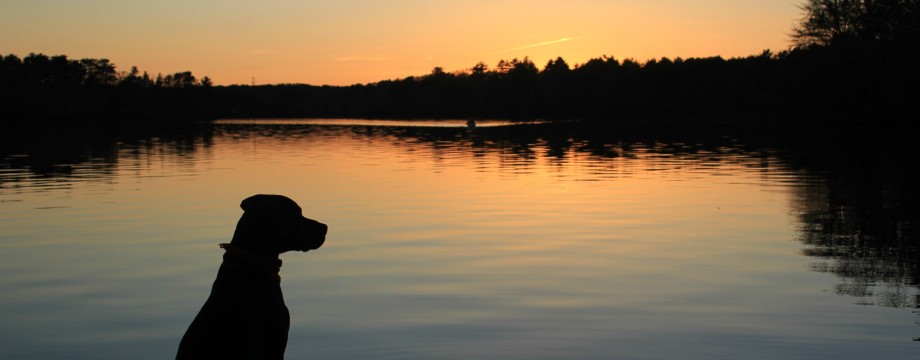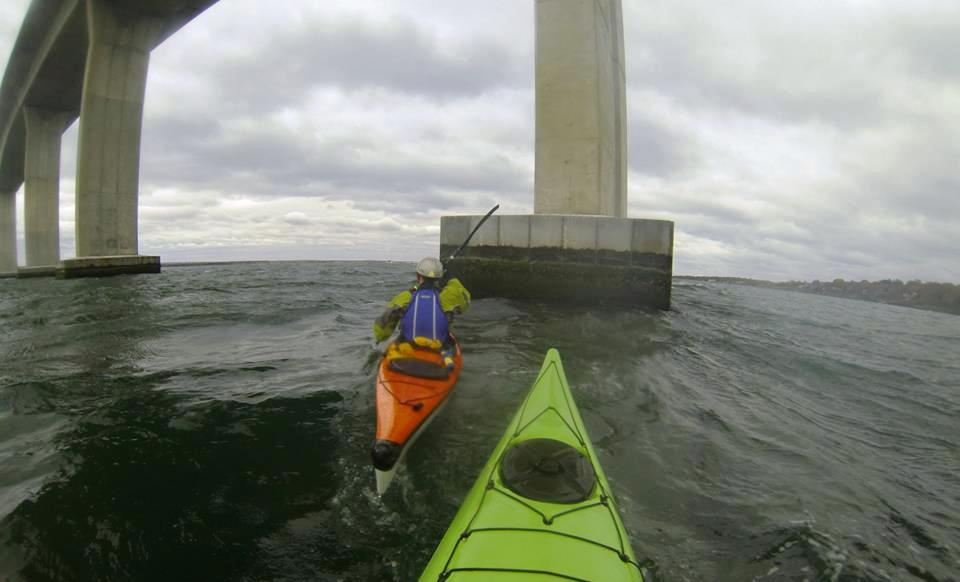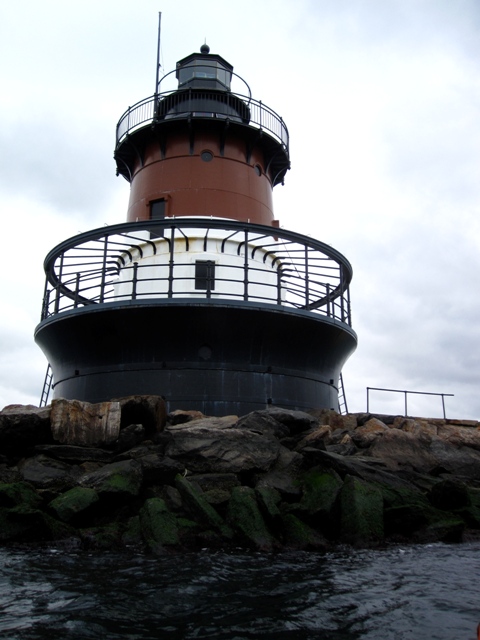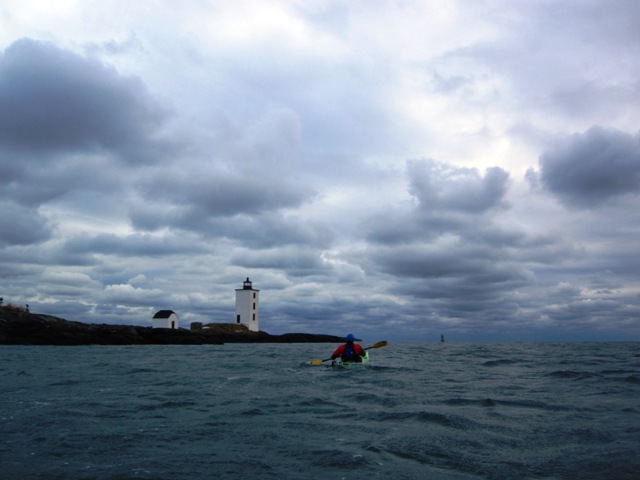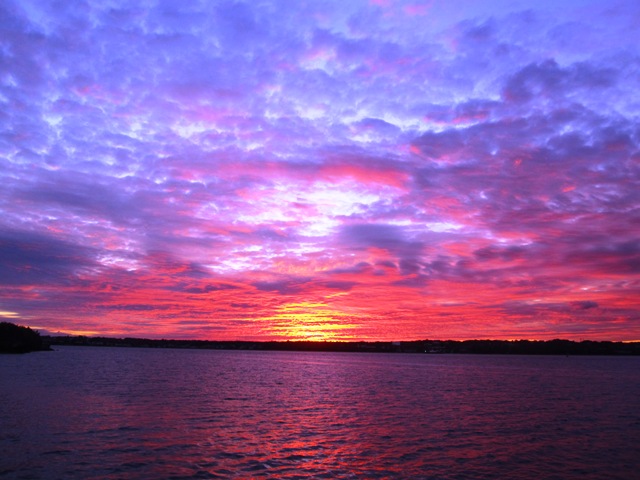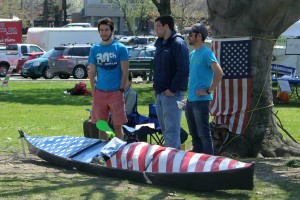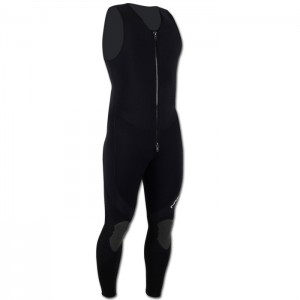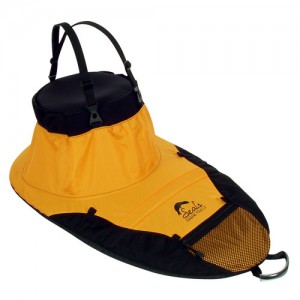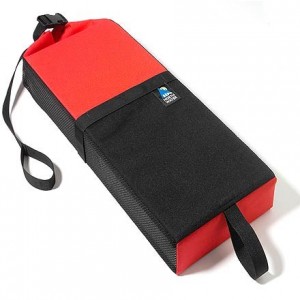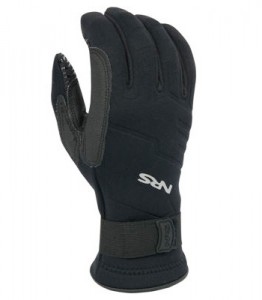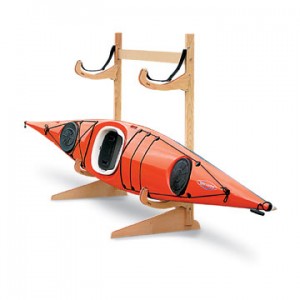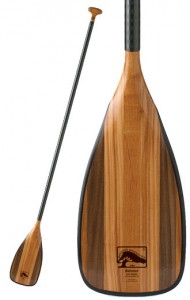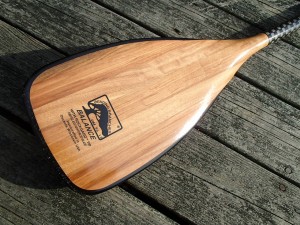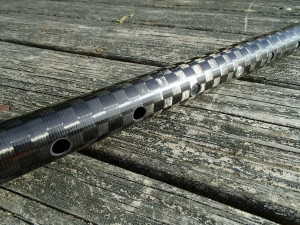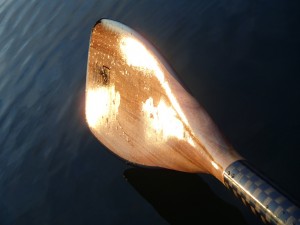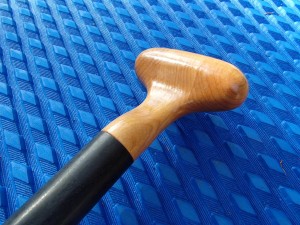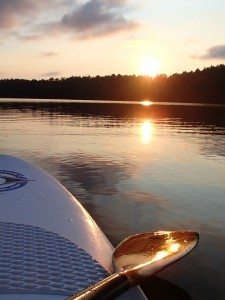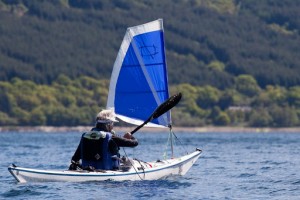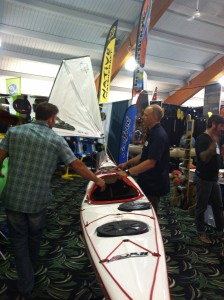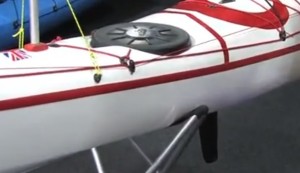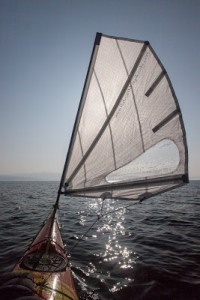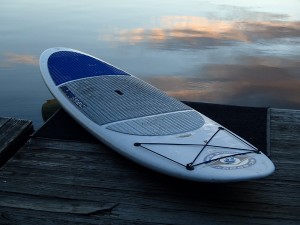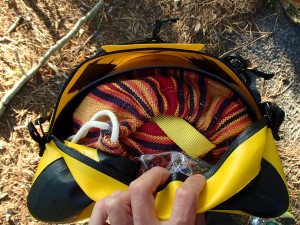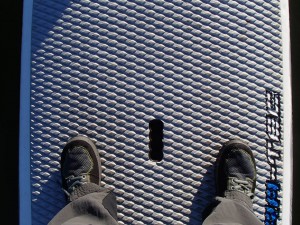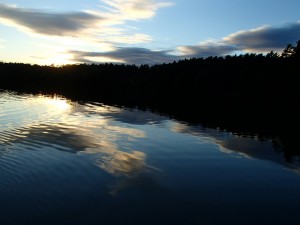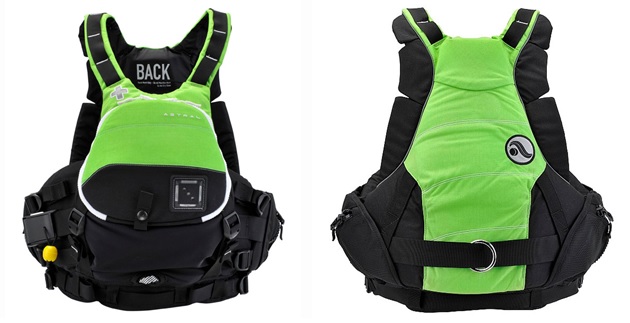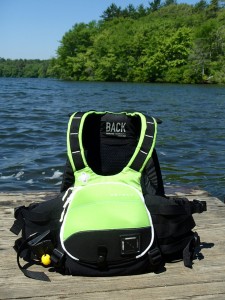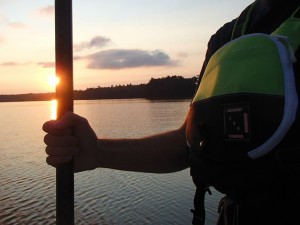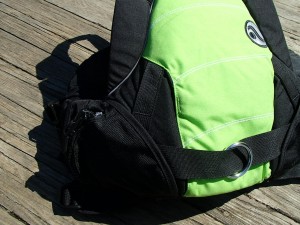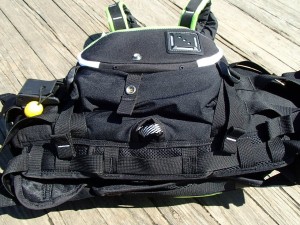Trip Deets
West Passage, Jamestown, RI
Date: Sun. November 3, 2013
Launch: Ft. Getty, Jamestown, RI at 11:00am
Return: Ft. Getty, Jamestown, RI at 4:30pm
Total Distance: 9.5miles
Weather and Ocean Conditions:
Temperature: 45F
Avg. Wind Speed: 15-20 knots; gusts of 25
Visibility: 10 miles
The fall is one of my favorite times to sea kayak, and this past weekend offered the chance, so we loaded up the boats and headed to Rhode Island. Due to heavy sustained winds, our original destination of Sakonnet, RI was scrapped in favor of the West Passage in Jamestown. This area offered more options without being as exposed to the incoming 3-5ft Atlantic swell.
We launched from Ft. Getty in Jamestown, which offered ample parking and a sheltered cove to begin our trip. We worked our way along the coast of Conanicut Island, paddling up through shore eddies, eventually working our way up to the enormous pylons of the Jamestown Verrazano Bridge, connecting Jamestown with North Kingstown. The massive footing blocks of the bridge offered a place to rest as we ferried into the confused chop between bridge supports. We followed this method until we reached Plum Beach Light, dwarfed by the bridge.
This lighthouse is a ‘sparkplug lighthouse’ with a characteristic shape that seems unique to southern New England. This lighthouse was built in 1899 and served faithfully until it was decommissioned in 1941, upon completion of the first bridge on this site. Built initially to warn of a hazard, the construction of the bridge made its role redundant and it fell into disrepair. The lighthouse was refurbished in 2003 and now serves as a Coast Guard Private Aid to Navigation. This lighthouse can be most easily seen when driving westbound over the Jamestown Verrazano Bridge and is also featured on specialty RI license plates.
With the hard work of paddling up-wind to the lighthouse complete, we turned around and enjoyed our down-wind cruise. The chop was a bit disorganized, but was consistent enough to surf the nearly 2 miles in about 20 minutes. Surfing a sea kayak provides the same sense of satisfaction as ‘earning your turns’ and I love it!
We landed on the western shore of Dutch Island and headed ashore to investigate. Dutch Island has a fascinating history and was the site of an early Dutch West India Company trading fort built in 1635, hence the name. The island later played host to a variety of military installations throughout the 19th and 20th centuries including housing heavy artillery batteries of 6in & 10in disappearing guns as well as German POW during WWII. Some ruins do remain on the island, however the majority is overgrown and trails are difficult to follow.

This ‘disappearing’ gun is similar to the type used for the harbor defenses of Narragansett Bay found on Dutch Island.
Paddling south down the western side of Dutch Island, we quickly came upon Dutch Island light, at the southern tip of the island. This handsome light was built in 1857 to replace an existing tower on the site built in 1827. The current tower is gleaming white after a 2007 renovation that rectified nearly 60 years of neglect. Originally, there was a keeper’s house that was built adjacent to the current tower, but this was demolished in 1950 after the lighthouse was automated in 1947. This 42ft tower flashes red and also functions as an extremely attractive day mark.
We continued paddling south along the western shore of Conanicut Island and debating paddling all the way to the Beavertail Light, but the 4+ mile walk or upwind paddle deterred us. With the sun setting we reached Ft. Getty to be treated to a beautiful sunset.
This trip was a great one considering the very windy conditions of the day. Narragansett Bay really does provide excellent sea kayaking relatively close to home-I can’t wait for my next trip!


